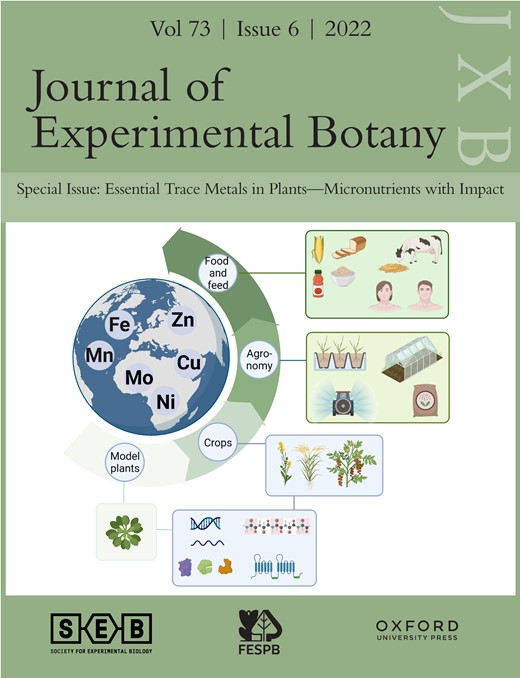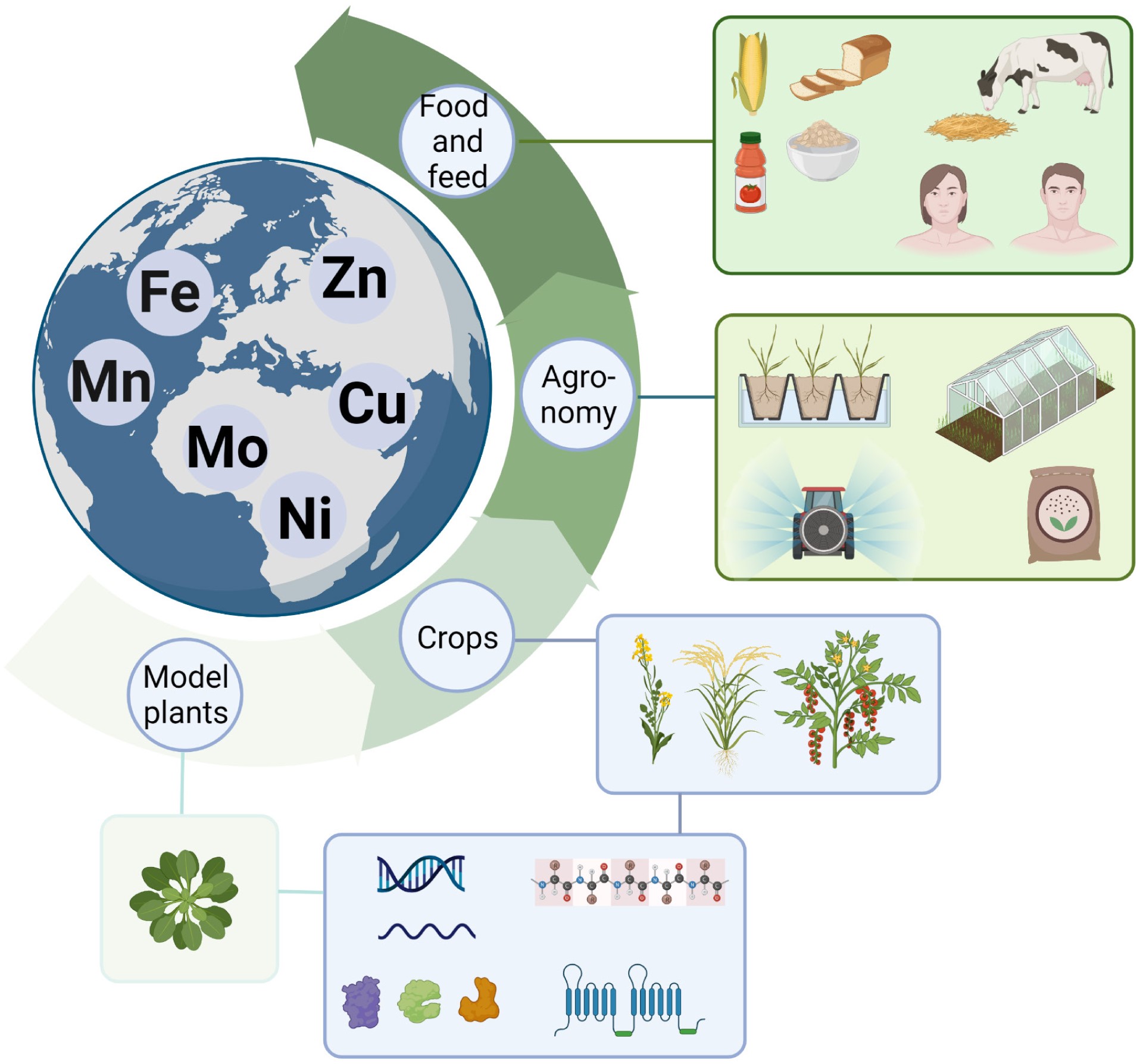
Cover image

Volume 73, Issue 6, 15 March 2022
Special Issue: Essential Trace Metals in Plants—Micronutrients with Impact
eXtra Botany
Special Issue Editorial
Essential trace metals: micronutrients with large impact
REVIEW PAPERS
The cell biology of zinc
Zn is a cofactor for countless processes and its accurate supply to cellular target sites represents a fundamental challenge. Underlying mechanisms controlling the dynamics of Zn pools in plant cells are poorly understood.
Zinc deficiency responses: bridging the gap between Arabidopsis and dicotyledonous crops
Zinc deficiency represents a major agronomic and health issue. Translating the massive knowledge acquired in Arabidopsis about zinc deficiency response mechanisms for biofortification of dicotyledonous crops is therefore paramount.
Iron in leaves: chemical forms, signalling, and in-cell distribution
Following iron transport to leaves, proper control over its location and incorporation is required, while sensing of the organellar iron status is also crucial.
The role of post-transcriptional modulators of metalloproteins in response to metal deficiencies
Post-transcriptional modulators of copper and iron metalloproteins establish a flexible ranking of protein metalation driven by the organelle signals under metal deficiency and stress conditions.
Metal crossroads in plants: modulation of nutrient acquisition and root development by essential trace metals
A comprehensive review of how the availability of essential trace metals modulates nutrient acquisition by altering the rhizosphere environment, interfering with uptake and signaling mechanisms, and shaping root systems.
Molybdenum: More than an essential element
We summarize current understanding of molybdate uptake and transport and discuss the potential role of molybdate transporter AtMOT1;1 in adaptation to local environments.
Essential trace metals in plant responses to heat stress
This work provides an overview of reciprocal interactions between trace metal homeostasis and heat stress responses in plants.
Micronutrient homeostasis in plants for more sustainable agriculture and healthier human nutrition
This review calls attention to the importance of plant micronutrient homeostasis for healthy nutrition of the growing human population, and for productive and sustainable agriculture, under increasing environmental constraints.
Zinc transport in rice: how to balance optimal plant requirements and human nutrition
This review describes the transporters involved in the uptake, vacuolar sequestration, root-to-shoot translocation, and distribution of zinc in rice, and discusses how to balance optimal plant nutrition and human nutrition for zinc.
Plant iron nutrition: the long road from soil to seeds
We review how the microbiota in the rhizosphere influence Fe uptake from soil, together with the process of loading Fe into seed, and consider how wild relatives provide a potential genetic resource for improvement of crops.
Nanoforms of essential metals: from hormetic phytoeffects to agricultural potential
Despite the diversity of nanometal-induced hormetic effects, the application of nanometals in sustainable agriculture is promising, but should be preceded by detailed examination of plant responses using (multi)omics.


